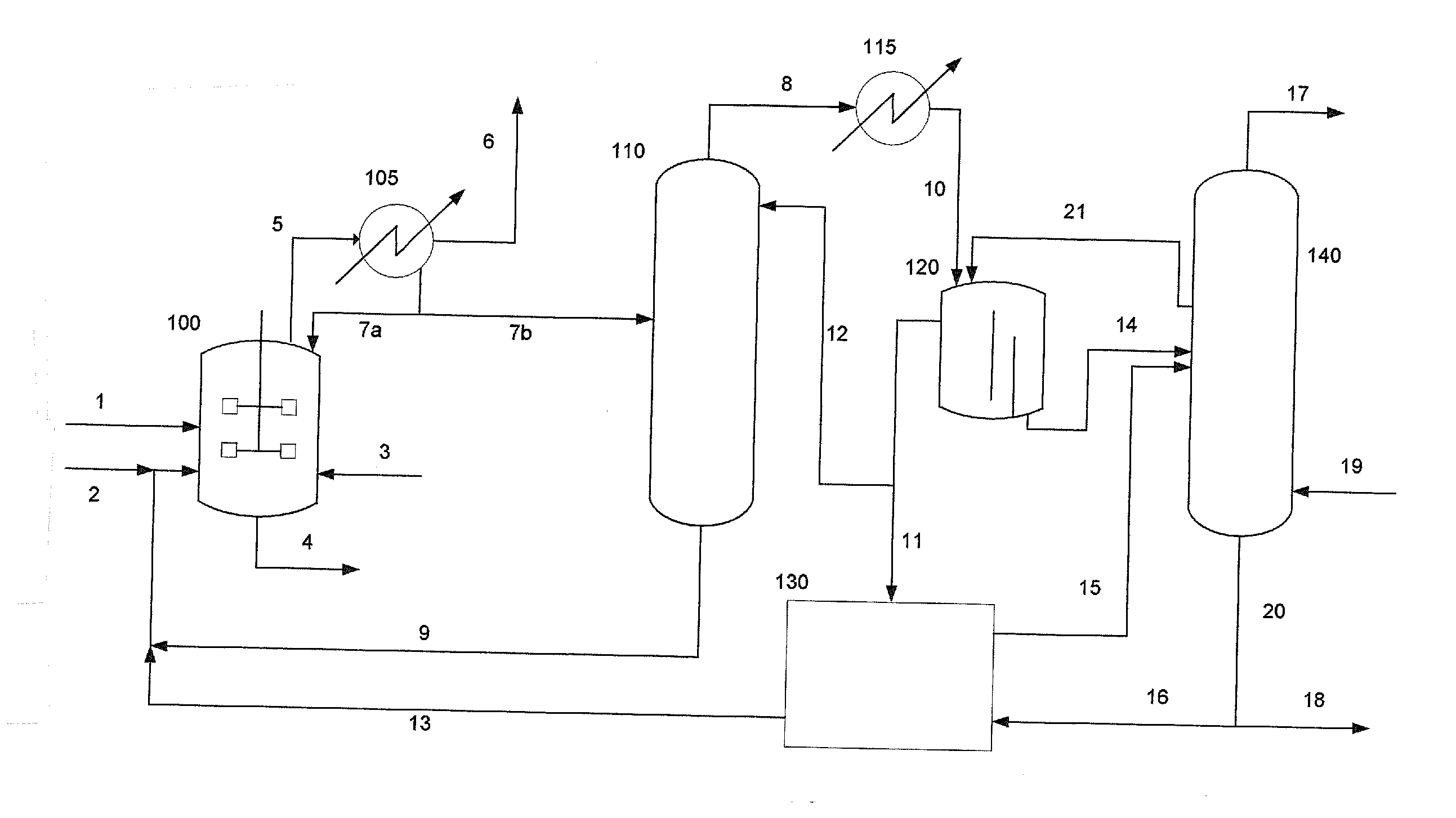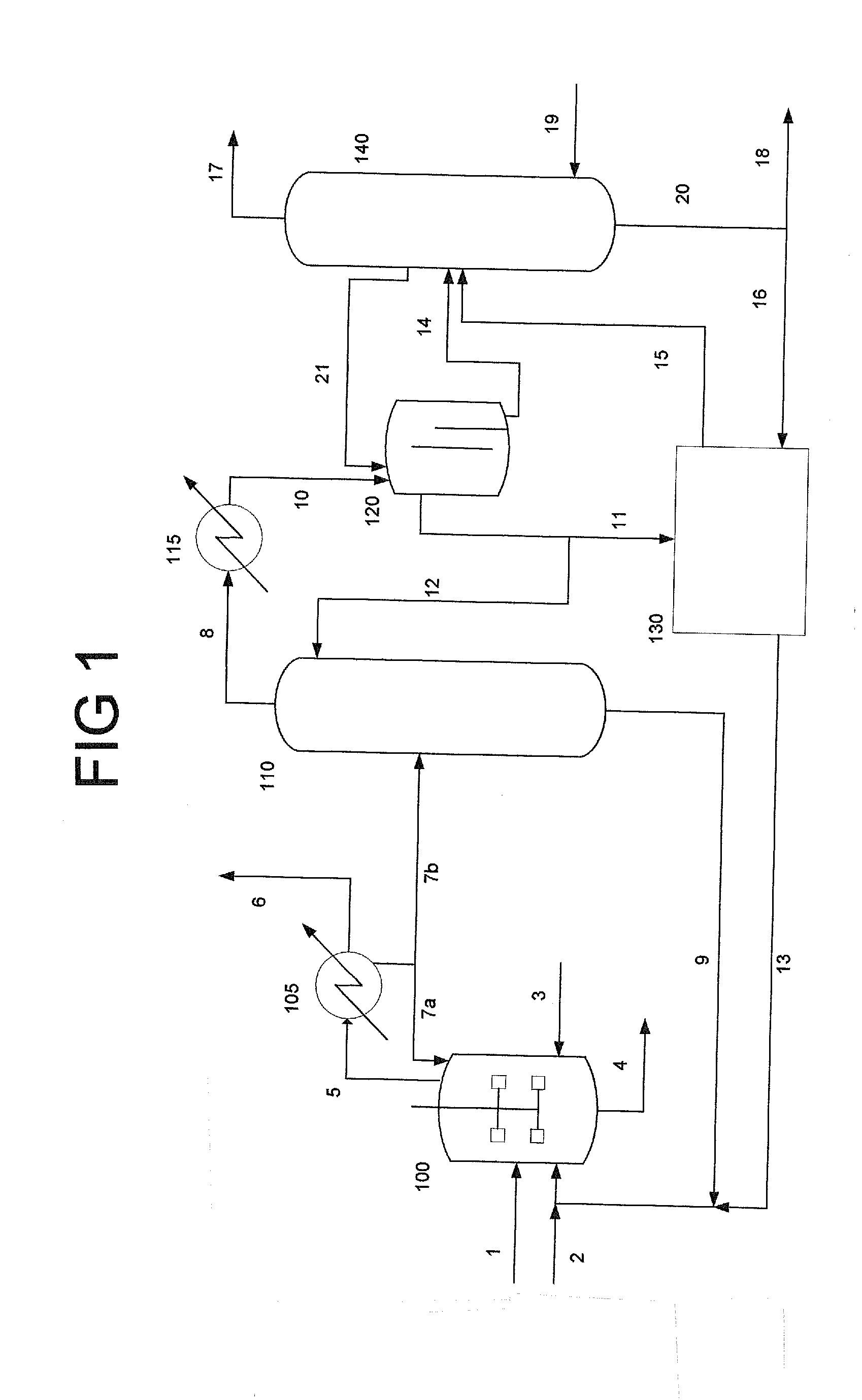Dehydration of acetic acid by azeotropic distillation in the production of an aromatic acid
a technology of acetic acid and distillation, which is applied in the preparation of carboxylic compounds, azeotropic distillation, organic chemistry, etc., can solve the problems of reducing the efficiency of water separation from the aliphatic carboxylic acid solvent, incurring additional costs, and inefficient purging of accumulated organics, so as to improve the separation effect of water and improve energy efficiency. operation, the effect of reducing the effectiveness of water separation
- Summary
- Abstract
- Description
- Claims
- Application Information
AI Technical Summary
Benefits of technology
Problems solved by technology
Method used
Image
Examples
examples
[0072]The following examples further illustrate the various aspects of the disclosed process.
[0073]A combination of physical measurements and modelling gives the results in the examples.
Continuous Extraction
[0074]Using a continuous extraction process to remove toluene from the azeotropic distillation reflux purge stream is demonstrated in Examples 1 and 2. By varying the number of theoretical extraction stages more than 75% of toluene in the azeotropic distillation reflux purge stream can be removed. In this way the concentration of toluene in the azeotropic distillation reflux stream is maintained at a conveniently low level of about 10% w / w or less and the efficient separation of water from the oxidation solvent in the azeotropic distillation stage of the manufacturing process is maintained. In contrast, Comparative example 1 shows that, without suitable treatment of an azeotropic distillation reflux purge stream, the concentration of toluene cannot be controlled and once the conc...
PUM
 Login to View More
Login to View More Abstract
Description
Claims
Application Information
 Login to View More
Login to View More - R&D
- Intellectual Property
- Life Sciences
- Materials
- Tech Scout
- Unparalleled Data Quality
- Higher Quality Content
- 60% Fewer Hallucinations
Browse by: Latest US Patents, China's latest patents, Technical Efficacy Thesaurus, Application Domain, Technology Topic, Popular Technical Reports.
© 2025 PatSnap. All rights reserved.Legal|Privacy policy|Modern Slavery Act Transparency Statement|Sitemap|About US| Contact US: help@patsnap.com



